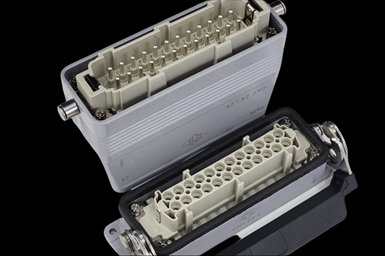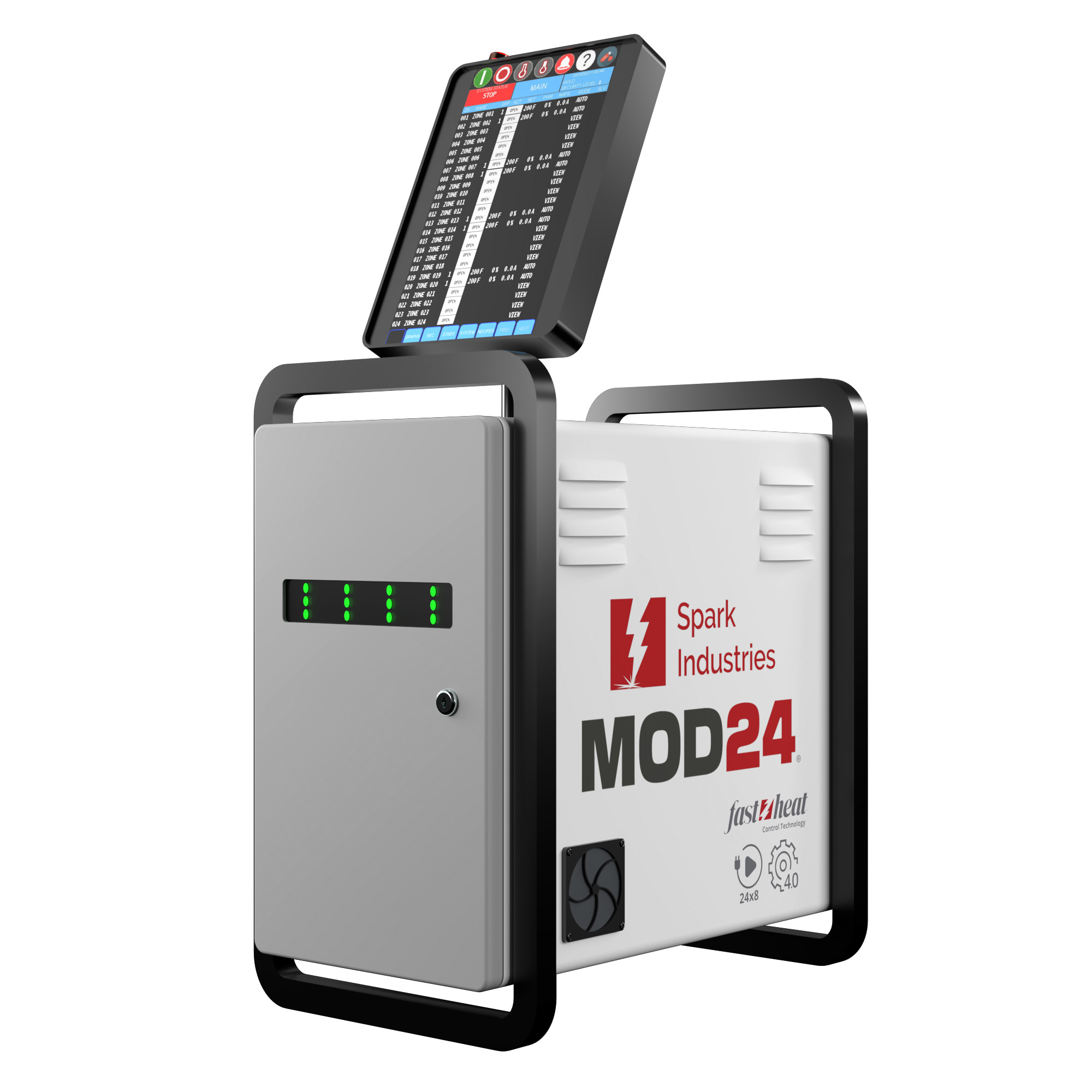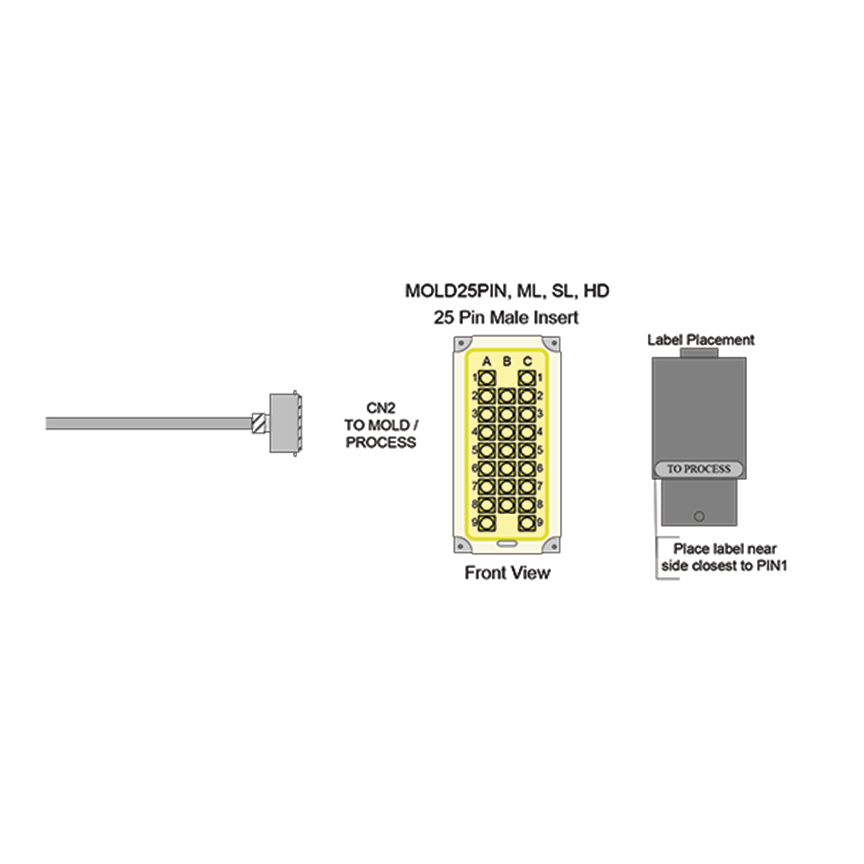Common Hot Runner Cable Connection Problems
Hot Runner Connector Anatomy
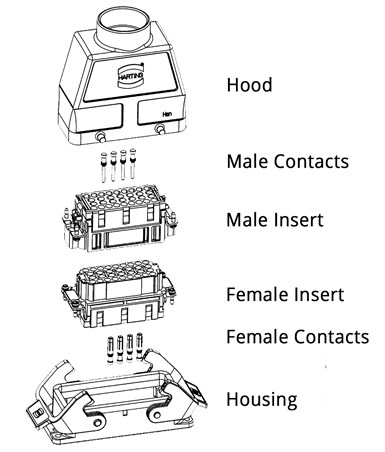
Simple fixes can result in significant differences in your manufacturing process.
You do not have to give in and just accept some common aggravating problems on the manufacturing floor. You may not think it’s worth changing some of the issues mentioned here. But what if these would make a difference to your bottom line? The problems that occur with hot runner cables can have a ripple effect on your whole manufacturing process and, of course, your finances. If the problem areas can be identified, often there are simple options to help.
After all, streamlining manufacturing processes and lowering maintenance costs are definitely things we should strive for on a daily basis, right?
Hot Runner Cable Problems:
Pushed-Back/Bent Pins/Breakage
Pushed-Back Inserts
High Amp Deterioration
Loose or Broken Latches
Missing or Loose Ground Wire Connections
PIN PUSH-BACK/BENT PIN/BREAKAGE

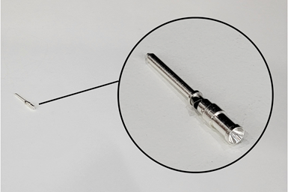
Pin push-back can interfere with making contact with the mating pin; this can cause intermittent connections with your hot runner cables. It can be difficult to “pin down” the exact problem or location when troubleshooting open circuits or other alarms because the pin may be intermittently connecting if it is due to push-back (or to being bent). This can be seen on a hot runner controller as an open heater, thermocouple, and even thermocouple reverse or shorts.
When mated to a female connector on a mold box, cable, or hot runner controller, your pins can easily be bent, pushed back, or broken.
Another cause might be that your connector is misaligned; misalignment can cause pin push-out/back and breakage.
PUSHED BACK INSERTS
Metal inserts can be pushed back when you insert the mating and male connector.
Pushed-back pins or inserts can result in an intermittent current or an open circuit.
Using your multimeter lead, You can check if inserts are seated correctly. Press it into the socket, and if the insert is unseated, it will easily slide back and out of the socket. We want good, consistent, stable contact.
HIGH AMP DETERIORATION
Short circuits are never good in any scenario. This happens when pin burn-out caused by high amp deterioration occurs, a significant connector failure caused by current overload, or a short circuit. Using a 10A connector for a 15A circuit is a crucial contributing factor in many shops.
Make sure you are performing frequent preventative maintenance, and also increase your amp ratings for larger heater applications or upgrade to a more robust connector system.
Other causes include cable failures, broken pins, and pin push-back. Chemicals and heat can also degrade materials on hot-runner cables. Make sure that you select the appropriate material for your manufacturing environment.
LOOSE/ BROKEN LATCHES
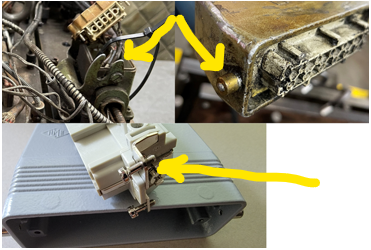 Some types of mechanical damage just happen. We all have accidents; connectors get dropped, smashed in tools, or even run over by forklifts. Broken or damaged latches and broken mounts are examples of connector damage found on plastic injection presses.
Some types of mechanical damage just happen. We all have accidents; connectors get dropped, smashed in tools, or even run over by forklifts. Broken or damaged latches and broken mounts are examples of connector damage found on plastic injection presses.
Your latches may also experience impairment by excessive loading on the latch while it is plugged in. It may be due to misalignment or random physical damage. You want to eliminate conductor stress and contact push-back to help reduce system failures. This will decrease downtime and maintenance costs related to damaged hoods or latch pins.
Lastly, properly training employees can provide the greatest improvement for the life of your connectors.
MISSING/LOOSE GROUND WIRE CONNECTION
Grounding from the hot half to the mold box through the cables and the controller and then to the facility ground is critically important.
Ground connections can definitely be a problem. And this is an area your employees may overlook because it is so simple and common. This situation occurs on everyday connections outside of the plant, too, so you can apply these tips across the board to any connection. Firstly, make sure your ground connections are there…I know, but it happens…sometimes they are gone! Then, make sure they are tight and clean. A dirty or corroded connection is going to cause trouble and likely at the most inconvenient time. We say it all the time…be proactive!
Ultimately, you need to consider that each of the potential problem situations mentioned means unplanned downtime for your press and tool if there is an issue…and that means losing time in your schedule and profits.
A few minor costs will result in significant savings. Proper cable installation and application will reduce downtime, repair, and replacement costs.
SOLUTION: A BETTER CONNECTOR
You can accomplish some quick fixes… and one significant change with great results is to include 24-pin male and female connectors; unlike your 25-pin connectors, these 24-pin connectors are heavy-duty. The pins won’t bend or get pushed back and are rated for 16 amps. They also have screw terminations and are much easier to connect to mating mold boxes, cables, or controllers. Take a look at the original article for a detailed diagram of the Anatomy of a Connector MoldMaking Technology Article and further tips.
Fast Heat by Spark Industries has answers for all of your hot runner controller and hot runner cable needs. Make us your go-to guys. We are here for all your questions; it’s what we do!


